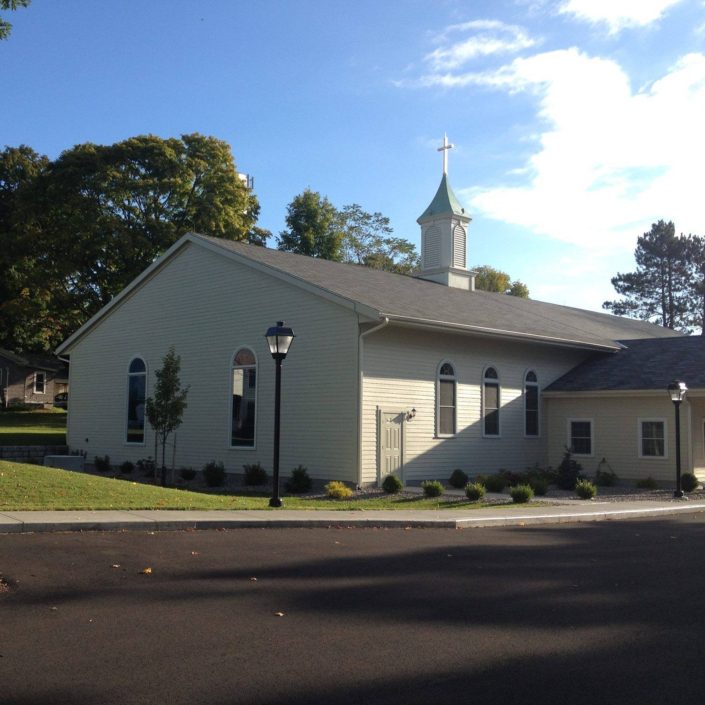
Land Where The Partridge Drums
A History of the Akwesasne Mohawk Nation
In the Shadow of Serpents:
Trials and Tribulations of the Early 1800’s
The Code of Handsome Lake
Written and illustrated by Darren Bonaparte
Handsome Lake, or Skanientariio, was a condoled Haudenosaunee chief of the Allegany Senecas. Like his half-brother, Cornplanter, he had become an alcoholic and signed away Seneca lands to the Americans. After one particularly heavy bout of drinking in 1799, Handsome Lake collapsed and entered a coma that his relatives mistook for death. It was in this comatose state that he had the first in a series of visions that would have a lasting impact on the Haudenosaunee.
These visions were apocalyptic in nature: they foretold the imminent destruction of the Haudenosaunee if they did not turn their back on the negative influences of the non-native culture—mainly, alcohol, gambling, materialism, and other vices. This message was carried among many of the Haudenosaunee reservations and was successful in turning many people away from the destructive habits of the settlers. It also gave them the impetus to revive many of the ceremonies that were on the verge of slipping into oblivion. In this respect, the “new religion” of the followers of Handsome Lake was a resurgence of the core belief system of the “old religion.”
This movement also had a lasting effect on the economic life of the Haudenosaunee. It encouraged the men to take up farming (previously the responsibility of the women) and to adopt certain aspects of the non-natives lifestyle, such as education. These things could serve the interests of the people by making them self-sufficient and able to deal with their non-native neighbors on an equal footing.
Handsome Lake’s message was rejected by some who heard it because of its similarity to the Christian teachings regarding the “End of Times.” Even today there are those who reject it because they feel Handsome Lake was strongly influenced by Quaker missionaries active among the Seneca at the time. Although the Quakers probably did teach Handsome Lake about their religion, their main purpose was not to evangelize but to help the natives adapt to their new surroundings by promoting education, modern farming techniques, and abstinence from immoral activities such as drinking and gossip. They accepted that the non-Christian religious experience was just as valid as their own teachings. This was in contrast to some of the missionary work being done in other communities that condemned traditional Haudenosaunee beliefs as Satanic and demon-inspired.
Still, the presence of Christian imagery and concepts in Handsome Lake’s teachings is confusing: even Jesus Christ makes a brief appearance in one of the visions, but he urges the Indians to stay away from the religion founded in his name. This puzzling aspect of the Handsome Lake teachings is one of the reasons why it hasn’t been accepted by all Haudenosaunee traditionalists, both in Handsome Lake’s day and today. It has been suggested that since Handsome Lake was preaching to an audience that had already been exposed to the missionaries for generations, these concepts had already entered the consciousness of the people whom he hoped to “reclaim.” He had to use concepts such as sin, judgment, and damnation to rationalize a return to the “old ways.”
Handsome Lake died in 1815 and was buried beneath the longhouse at Onondaga. Although the Code of Handsome Lake, or Kariwiio (‘The Good Message”) was not introduced to Akwesasne or the other predominantly Catholic Mohawk settlements of Kahnawake and Kanesatake until the early twentieth century, its influence would be felt by these communities with the revitalization and strengthening of their brother nations of the Haudenosaunee Confederacy in both New York and Canada. (Wallace 1979:442-448)
In those days it was quite common for prophets to arise with similar messages for other native groups. They usually had one thing in common: they called for a revival of sacred ceremonies to guard against the destruction of their communities by assimilation and war. The Shawnee Tecumseh gained much of his support for a pan-Indian alliance by the words of his brother, the Prophet, and there was even a time when a young Mohawk man at Grand River had a vision that called for a revival of ancient ways. This served to embarrass Joseph Brant, who generally looked down his nose at the unwillingness of many of his fellow Haudenosaunee to forsake their “pagan” customs and adopt the ways of the Europeans. In this case, however, Brant’s aversion to sudden prophets may have come from his own personal experiences with those who had taken advantage of native spiritual beliefs to further their own political careers. One of his old rivals, the famous Seneca orator Red Jacket, first achieved his own position of authority among the Seneca by claiming to have had dreams in which the other chiefs made him a chief—a dream commandment that the other chiefs were spiritually obligated to help him fulfill.
Next week: A Glimpse of Akwesasne Life in the Early 1800’s
By Darren Bonaparte, historian and author of The Wampum Chronicles. Reprinted with permission.
Darren Bonaparte is a cultural historian from the Akwesasne First Nation. He is a frequent lecturer at schools, universities, museums, and historical sites in the United States and Canada. He has written four books, several articles, and the libretto for the McGill Chamber Orchestra’s Aboriginal Visions and Voices. Darren is a former chief of the Mohawk Council of Akwesasne. He is the creator of The Wampum Chronicles and historical advisor to film and television. He currently serves as the Director of the Tribal Historic Preservation Office of the Saint Regis Mohawk Tribe.














